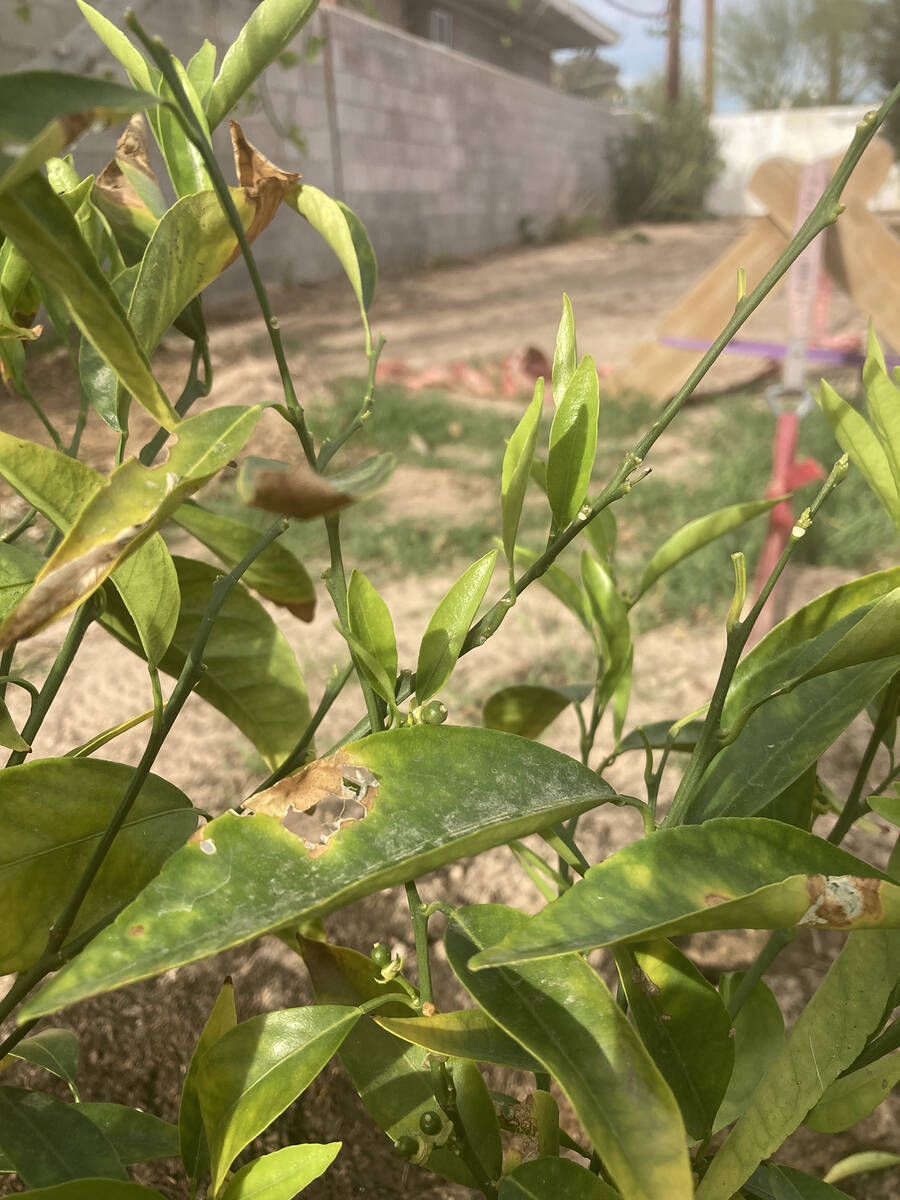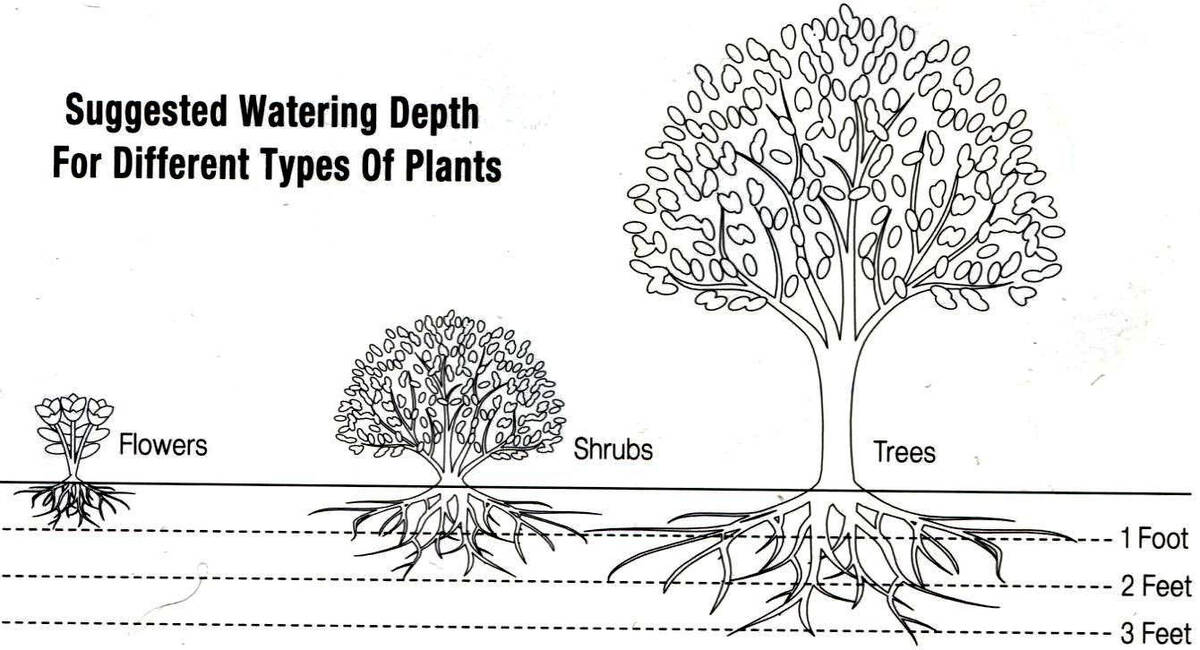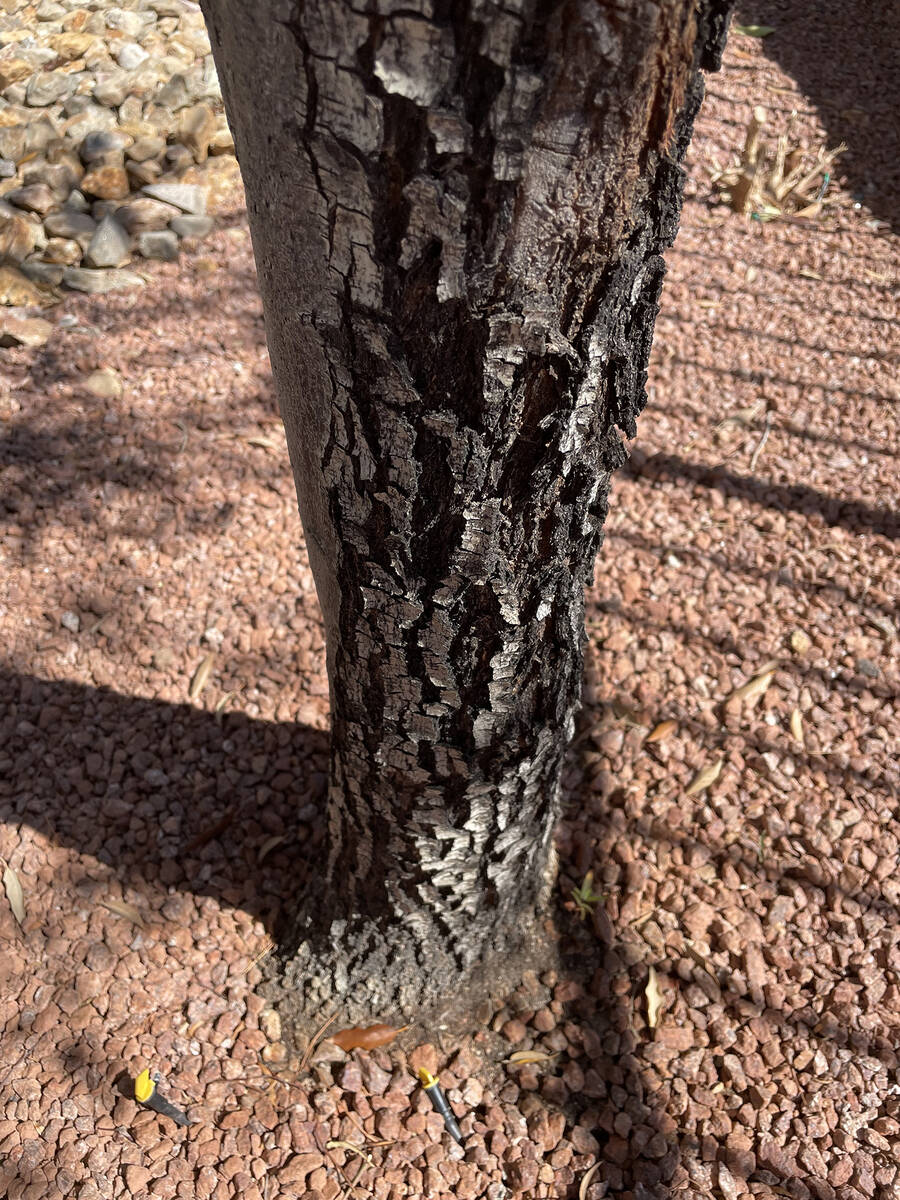Plant’s root depth, genetics factor into watering schedule
Q. I’ve checked on the internet and have some materials from our state, but I still can’t compare the terms “infrequent and moderate.” Does “infrequent” mean once every two weeks? Once a month? And what does “moderate” mean? One gallon per watering?
A. I agree those terms are misleading. I think those terms are used by people who don’t understand the differences themselves or they would explain them. It sounds like a topic for my audio podcast, “Desert Horticulture.”
Two concepts should be understood. Plant roots extract water from the soil deeper as the soil at the surface gets drier. The surface roots are the first to “suck up” water after an irrigation. As we water plants infrequently, the roots extract water and grow into deeper layers of soil. Deep rooting of plants is the main reason good gardeners say, “Water plants deeply but infrequently.”
The major reason we do not give plants “tiny sips of water” daily is because this practice encourages plants to grow their roots more shallow. There is a second reason: tolerance to heat. Plants with deeper roots have a better chance of withstanding the heat of summer.
“Moderate” amounts of water usually means enough water to “wet the roots growing in the soil” and little or no more. We learned that the depth of plant roots depends on the size of the plant; bigger plants frequently have deeper roots than smaller plants. The depth of plant roots also varies with the genetics of the plant and the type of soil.
The deepest roots are with those plants that are large, have the genetic potential to grow deep roots and grow on sandy soils. The shallowest roots are found on small plants that don’t have the genetic potential for deep roots and grow in a heavy clay soil.
Q. I just bought a dwarf Algerian and dwarf Dancy mandarin orange. The Dancy is doing fine but the Algerian’s leaves are getting brown spots and falling. Is this a pest or disease? I don’t want it to spread.
A. Our humidity is so low that I doubt it’s a disease problem. The reason for the difference in leaf brown spots could be location, soils or the genetics of the plant. The spots are most likely cultural (management), something you have done or should be doing. Since it happened after transplanting, I’m guessing it has something to do with how it was planted, where it was planted or how the tree was irrigated.
Both trees grow in the subtropics to tropics so make sure the tree was planted with a mixture of compost and soil in a hole about 3 feet wide and about 12-18 inches deep. The additions of organics in the soil should darken it. Cover this planting with a layer of wood chips. Make sure it is staked after planting in case there are strong winds.
If planted in full sun on the west or south side of a building and it’s showing signs of sun or heat stress, consider shading the tree’s canopy for the first year of growth. Shading doesn’t require shade cloth. It can be done with anything that provides some late afternoon shade.
Do not water trees daily except immediately after planting. Daily irrigations are meant only to settle the soil around the roots, not to give the tree a daily “sip” of water. During the hot summer months, water as infrequently as every other day if two days of water is applied all at once.
With a newly planted 5-gallon fruit tree, the tree should receive 4-6 gallons of water each time it’s watered. This water should be distributed through three, 2-gallon per hour emitters or four 1-gallon per hour drip emitters under the canopy of the tree at about a foot from the trunk. As the tree gets larger over time, it will need more water applied over a larger area. Plan for it. Add additional drip emitters (not extra minutes) further from the trunk under the expanding canopy to give it this extra water. When the tree is fully grown at 20 to 25 feet, it should need about 30 gallons of water at each watering.
Plant these trees at least 3 or 4 feet from hot walls and they should handle the reflected high temperatures OK if the soil is amended and they are watered before it gets hot. Fertilize the trees right after harvest with a citrus fertilizer.
The dwarf version of mandarin orange should get about 12 feet tall and 12 feet wide if unpruned. Dancy mandarin oranges (sometimes called tangerines) are the most popular mandarin orange fruit in the world (sometimes called “Cuties” in the supermarket). Algerian mandarin oranges are noted for their winter cold hardiness.
Q. I have a sick oak tree in our backyard. It is an older tree and not growing well. Our gardener suggested hiring an arborist to treat the tree and help it recover. Can we purchase something to correct this? Would an arborist be able to save it? Your thoughts.
A. From the picture you sent it looks like a southern live oak such as Heritage. It looks like the trunk of the tree is slow to recover and has some pretty old wounds. Getting it to recover depends on how far “gone” it is. You will not know that until the summer heat hits.
I am questioning two things: first is the rock up to the trunk and secondly how much water it’s getting and how often. I’m also wondering if it has borer damage on the trunk. Basically, you want it to “heal” as quickly as possible before the summer heat.
All oaks like organics added to the soil and don’t like the soil mineralized by rock mulch over time. Rake the rock back 3 feet from the trunk. Change this area over to a layer of organics that can rot on top of the soil. Add a thin layer of finely screened compost to the soil. Water the tree 2 feet deep once a week right now. This can be done with a sprinkler on the end of a hose. This may be increased to twice a week if it gets hot and windy.
Secondly, this tree needs additional water each time it’s irrigated: 15-20 gallons during the first few years but now may be 30-40 gallons each time. Instead of increasing or decreasing the minutes, add more and larger drip emitters to the area under the tree. Put sprinkler hose water into a 6-8 foot wide area under the tree for about one hour and encourage the roots to “chase” the water into this newly wetted area. This will increase the tree’s vigor and cause it to heal fast. No need for additional fertilizer if the compost is rich with nutrients.
If you see evidence of borer activity from previous years, it probably was reinfested each year since that time. Soil drench the area under the tree with a borer systemic insecticide. Apply it as a soil drench after the tree finishes flowering.
Q. I was hoping you could give me some recommendations for the best dwarf citrus trees to plant in a 20-inch wide by 22-inch high pot. I already have a kumquat tree in another pot. Thanks so much for any advice you can give me.
A. Your best choices are the kumquats since they tolerate freezing temperatures better than most citrus and they continuously flower throughout the year. If you have a Nagami, try a Meiwa variety. Your second choice are the dwarf mandarin oranges (clementines aka tangerines on dwarfing rootstock) such as Dancy or Algerian. They aren’t as cold tolerant as kumquat but the dwarf types are the right size for a container.
The lime and dwarf lemon trees are a temptation to plant, but they are not cold tolerant. With freezing temperatures you must wheel them into a protected area until these freezing temperatures are over.
Bob Morris is a horticulture expert and professor emeritus of the University of Nevada, Las Vegas. Visit his blog at xtremehorticulture.blogspot.com. Send questions to Extremehort@aol.com.










